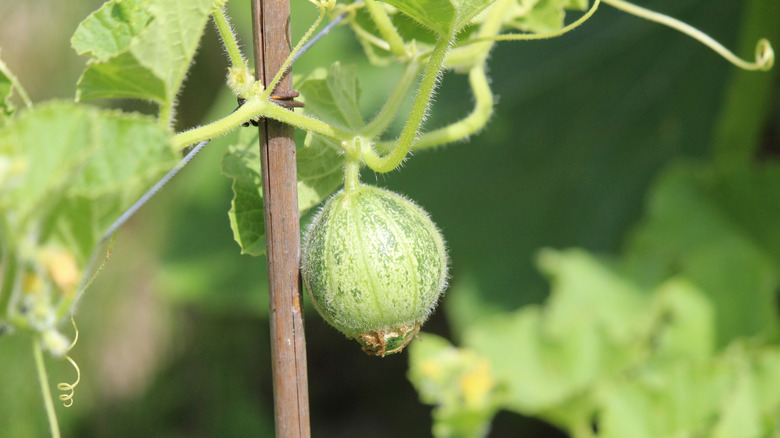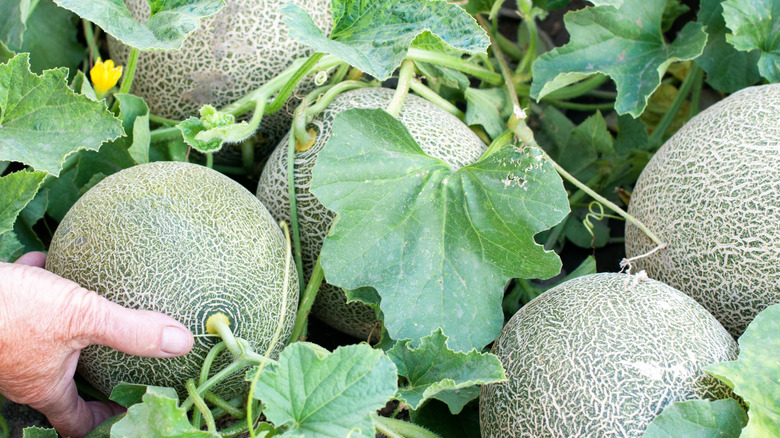Why Your Cantaloupe Vines Look Healthy But Won't Fruit
Cantaloupes (Cucumis melo), with their musky flavor and distinct aroma, grow on vines that can reach almost 10 feet in length. The large, round fruit are produced from small yellow flowers that around an inch in size. Healthy vines are dense and lush with sturdy, broad green leaves. A number of issues can cause your vines to appear healthy but never reward you with cantaloupe. Water stress, high heat, the wrong kind of fertilizer, too much nitrogen in the soil, and pests or disease can lead to disappointment, but the biggest factor is not having the right environment for pollination. Both male and female flowers appear on the vine, but only the female creates fruit after pollen is transferred from the male to the female flower by bees. Adequate pollination is essential to get large, properly shaped fruit.
Starting the plants in the right conditions goes a long way to ensuring success. Cantaloupe, hardy in USDA growing zones 2 through 11, require full sun and well-drained soil with an acidic to neutral pH. Melons are a warm-weather crop, so wait to plant seeds or seedlings until all danger of frost has passed. Work organic material into the soil before planting, and leave plenty of space between the rows, at least 2 feet, for the vines to spread. Like all melons, cantaloupe needs lots of water. Keep the rows moist but not wet, and don't let them dry out between waterings. Consider planting gorgeous spring flowers to bring beneficial bees to your yard, which are necessary to pollinate the cantaloupe flowers.
Why aren't my cantaloupe vines setting fruit?
Very hot weather can cause female cantaloupe blossoms to drop off or fail to set fruit or for the plant to only produce male flowers. Melons do best when the daytime temperature is between 65 and 95 degrees Fahrenheit. Female cantaloupe flowers must be pollinated by bees to produce fruit. If they're not, the fruit will begin to grow but quickly shrivel and drop from the vine. If you suspect your landscape is lacking bees, make it more bee-friendly by planting flowers with long bloom times that are appropriate for your area. Some bees nest in the ground or in wood. Leave a few bare patches for the bees to build their nests. Avoid using chemical pesticides, and if you must use them, do it at night.
Excessive amounts of nitrogen can encourage too much vine growth and reduce melon production. Send a soil sample to your local extension office, or use a simple glass jar soil test to determine what fertilizer your soil needs for melon growing. Spread fertilizer on the soil before planting and again just after the vines develop runners.
There are a few other problems that may affect cantaloupe production, but they aren't usually the cause of healthy flowering vines not setting fruit. Infestations of insects, like squash vine borers, aphids, and cucumber beetles, damage the vines and leaves. Powdery mildew can kill the leaves. Blossom end rot, where the fruit starts to set but the area where the blossom was rots, can be caused by bad watering techniques or low calcium in the soil.

